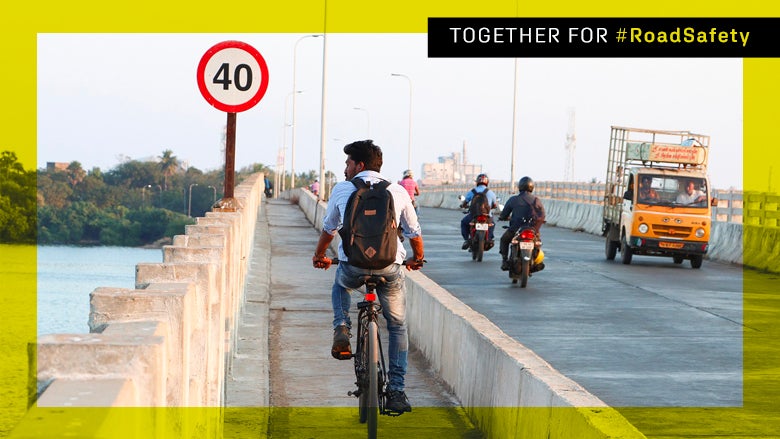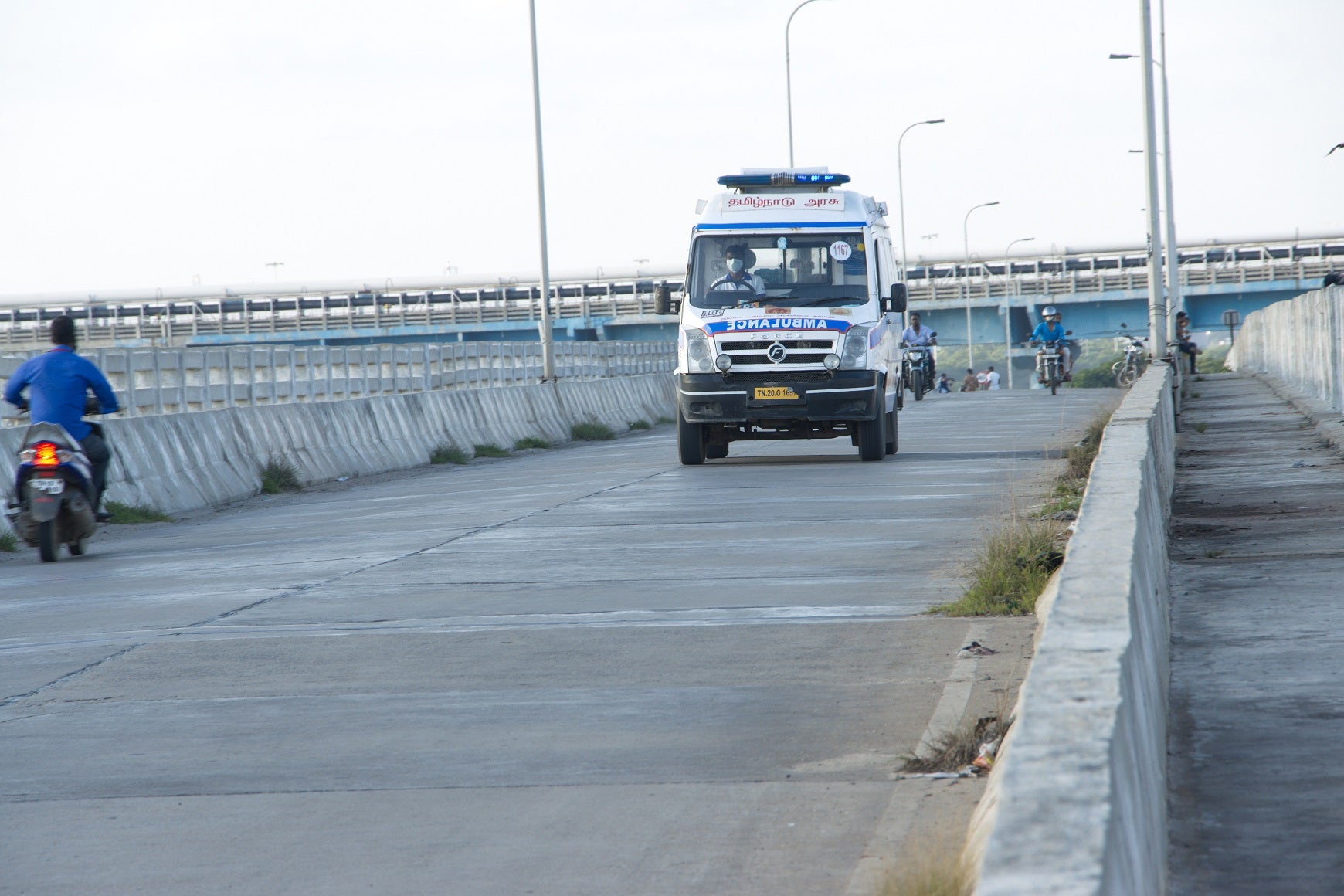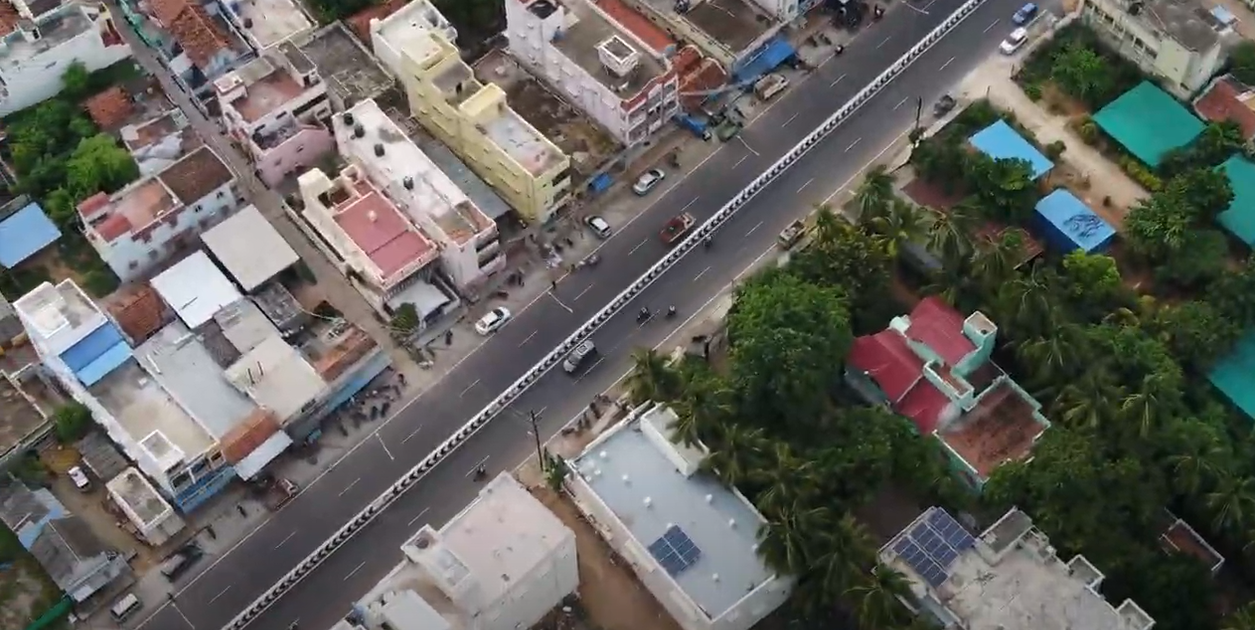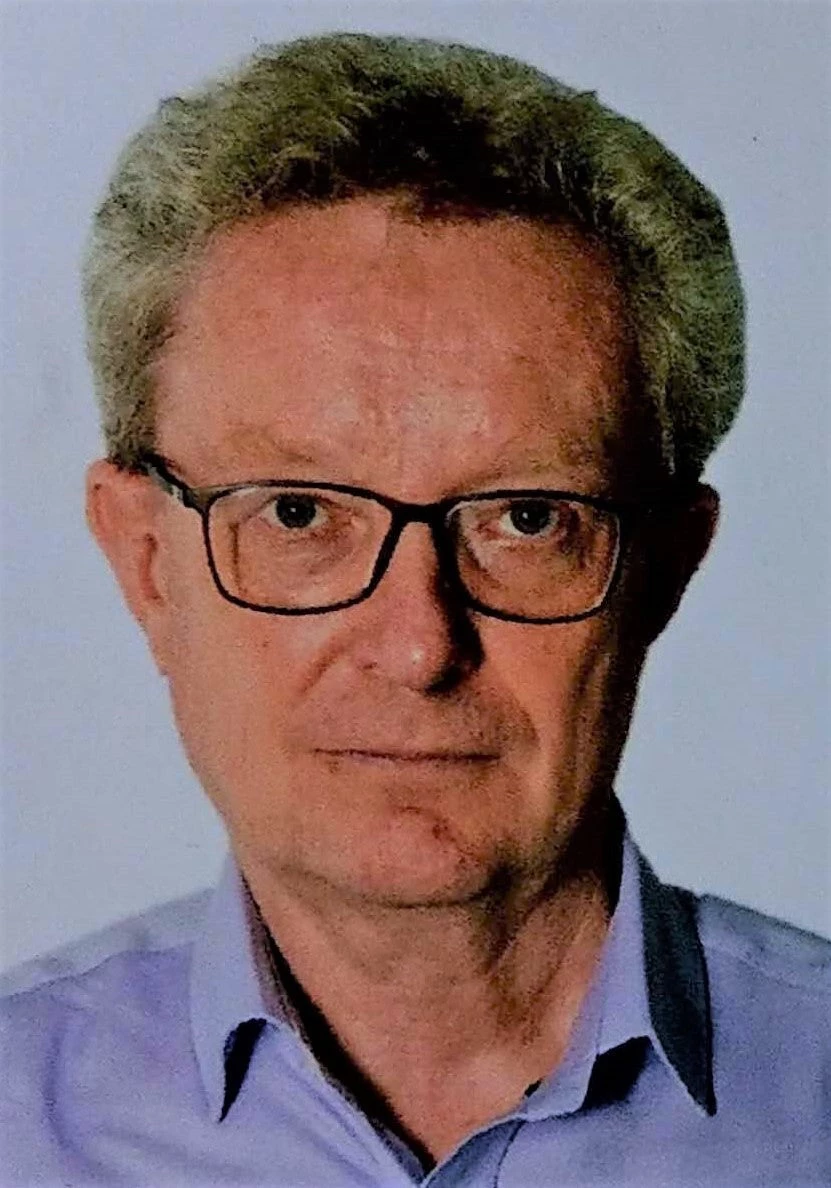 Young Boys Cycling at Ennore Creek Bridge, Tamil Nadu, India.
Young Boys Cycling at Ennore Creek Bridge, Tamil Nadu, India.
Road safety is a critical development priority for South Asia, impacting health, wellbeing and economic growth. Countries in the region must work together if they are to achieve the goal of halving road crash deaths by 2030. This blog is part of our Together for Road Safety campaign.
“Every life lost on the road is one too many” resonates viscerally in Tamil Nadu, which until recently, was one of the worst-ranked states in India for road crashes and fatalities .
In 2014, more than 15,000 people were dying every year from road crashes in Tamil Nadu. But decision-makers have turned the situation around through strategic vision and leadership.
In 2019, road deaths in Tamil Nadu fell to 10,000, a reduction of over 25 percent. What’s notable is that improving road safety did not come at the expense of economic development but rather supported it.
Tamil Nadu focused on coordinated management of interventions, bringing all key stakeholders to the table.

Strong leadership and improved road safety management
Tamil Nadu focused on coordinated management of multi-sectoral interventions, bringing all key stakeholders to the table, and establishing a Road Safety Executive Leadership Group - responsible for decision making across the state. A Road Safety Management Cell supported the leadership to implement actions, review monthly road safety initiatives, statistics and targets at the district level while crash trends were reviewed monthly by no less than the state’s Director-General of Police.
Interdepartmental coordination and standard operating procedures included teams of Police, Highways and Transport visiting every fatal crash site and reporting on causative factors, remedial and punitive measures within three days. This provided the recipe for sustained and holistic management of the road safety problem in the state.
Tamil Nadu has brought down the post-crash response time of emergency medical teams to 14 minutes.
Focus on post-crash response
Improving the trauma care system was an essential component of road safety management in Tamil Nadu . The state established Emergency Care Centers and Accident Relief Centers on high crash-prone road stretches in national and state highways.
Response time was dramatically improved through a dedicated call-line as well as proactive allocation and dynamic positioning of ambulances. The state also introduced triage and acuity scoring systems at the pre-hospital level to ensure prioritization of patients. Effective traffic management of emergency vehicles at signalized junctions helped reduce travel time.
These efforts were supplemented through institutional, data management and capacity building efforts such as developing a Centre of Excellence in trauma care in Kanchipuram, implementing trauma registries in hospitals for systematic data analysis, and first-responder training. These successes have also enabled Tamil Nadu to be well-positioned to quickly adjust and provide additional ambulance support to patients during the COVID-19 pandemic.

A ‘first of its kind’ crash database system
Tamil Nadu is a leader in the use of data-driven, scientific approaches to address road safety challenges with its web enabled GIS-based Road Accident Database Management System (RADMS) developed over a decade ago. This “first of its kind” system, which maps road accidents, identifies the most crash-prone hot spots, and pinpoints corrective action, has now been adopted as the template for replication at a national level for all other states.
Use of RADMS with its linkage to medical facilities across the state has brought down the post-crash response time of emergency medical teams to 14 minutes , at par with the world’s best trauma services.
Adapting infrastructure to a fast urbanizing state
Tamil Nadu has a tradition of good road building with safety improvement measures built in. It also adapted its infrastructure to urbanizing conditions through pedestrian footpaths, fencing and crossing facilities, traffic calming, signage, and channelization.
Between 2014 and 2018, the state Highways Department spent almost $200 million on special road safety programs and on rectifying more than 200 crash hotspots; about 2% of the capital expenditure under its Core Road Infrastructure Development Program has been earmarked for road safety, and the state also effectively utilized the Central Road Fund earmarked to states for safety engineering works.

Improving road user compliance
Stringent enforcement has also significantly improved road user compliance and transparency. Enforcement of helmet laws, working hours of tourist/maxi cab drivers, and wine shops along highways was tightened; district collectors were asked to rationalize the speed limits on highways and a control room activated to monitor highway police patrol; and traffic regulations strictly enforced with e-challans issued through smart integration with the national vehicle and license databases.
This yielded impressive results on behavior change - between 2018 and 2019, two-wheeler fatalities in Tamil Nadu due to non-wearing of helmets declined by 28% . The state is now embarking on the next level of deterrence of risky user behaviors through automated speed enforcement systems and modernized equipment and tools.
The road ahead
Tamil Nadu’s early successes show that data-driven evidence-based road safety interventions when applied well are likely to produce the desired results. Mobilizing large resources for road safety is also possible despite the lack of a lead agency and dedicated funding arrangements.
The World Bank worked closely with the state government to support these multi-sectoral road safety initiatives, through projects including the Tamil Nadu Road Sector Project and the Health System Reform Program.
Going forward, sustaining these achievements will require that Tamil Nadu’s efforts on road safety management, post-crash care, infrastructure safety, and digital enforcement are continued. Other states in India would do well to traverse a similar road towards lower road crash deaths.




Join the Conversation